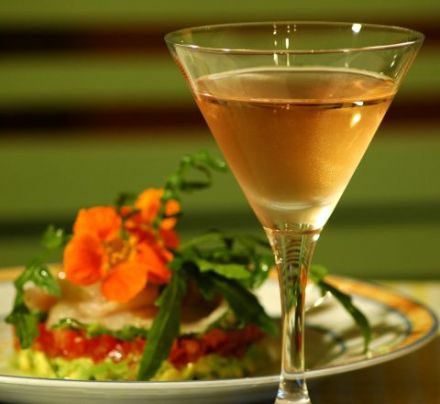 |
Flavors of Provence-Alpes-Côte-d'Azur
All about French Wines > Provence Wines > Vinification & Tasting
Vinification:
Provence appellation d'origine contrôlée wines derive from several growths. Initially, the producer harvests and vinifies each of them separately. Then, after careful evaluation of the qualities of each of these single growth wines, he assembles them in proportions adjusted every year depending on the vintage, so that the final product brings together the qualities of each original growth. In this way, each of the growths adds its character to the final product which has to be balanced, harmonious, giving full expression to the 'terroir' as required by the tradition of appellations d'origine contrôlée.
This work means being a goldsmith and an orchestra conductor at the same time. In Provence, assemblage is a very difficult stage in the production of wine. The basic principles of vinification have remained immutable over time and in the wine cellar, the work of the wine maker has travelled through time to our era practically untouched. That said, the tools, the equipment and the machinery have evolved enormously, making the techniques far more reliable and sophisticated.
Tasting:
Courgette, eggplant, tomatoes, tapenades, red mullet, Mediterranean sea bass, dwarf cuttlefish, sea urchins, sea squirt... a Provence market is an Impressionist painting come to life, with a myriad of colours, smells and tastes to heighten the senses. In Provence, the land is generous and its wines are ideal for accompanying this natural cuisine. The diversity of Provence wines means they go with any dish, through to the most exotic.
With Provence reds
A young, lively and fruity Provence red wine goes particularly well with grilled dishes, perfumed with the flavours of the garrigue, white meat, legs of lamb, cold stews served as a salad, vegetable “tians” or tomatoes served in olive oil. But there are also top quality red wines in Provence that will keep for many years. When they reach full maturity, after being raised in barrels, they are extraordinary when served with fuller dishes such as long-simmered meat (casseroles, jugged hare or rabbit, feet and packets), game and strong cheeses.
With Provence rosés
A real feast for the eyes with a salmon pink colour, Provence rosé wines that are so light and fruity, gentle, bright and aromatic, offering flavours that set Provençale cuisine off so well: ratatouille, “barigoule” artichokes, courgette flowers, Provence-style stuffed specialties (petits farcis), sea bass with fennel, red mullet fillets with thyme and touches of spice, aïoli, pistou soup, anchovy dishes, bouillabaisse. And they work wonderfully well with the briny taste of sea urchins and sea squirt, although this is not to say that Provence rosés are not ideal with Japanese sushi, Thai cuisine, Moroccan tagines or Indian curries, all dishes with which they are superb.
With Provence whites
Provence whites are varied although only a relatively small quantity is produced. Quite pale in colour, fresh and flavoursome when young they add a fruity touch to grilled seafood, or served with a sauce. The mild and perfumed whites of the coastal areas are good with fish grilled in herbs, Provence-style Saint Jacques scallops, skewered scallops, a "ceviche" of fresh fish served with ginger. And the fuller whites from further inland, are ideal with crawfish, lobster and fish served in sauce.
Source : Conseil Interprofessionnel des Vins de Provence

-

 Recipes
Recipes
-

 Products
Products
-

 Entertaining
Entertaining
-

 Chefs
Chefs
-

 Hints & Tips
Hints & Tips
-

 Glossaries
Glossaries








